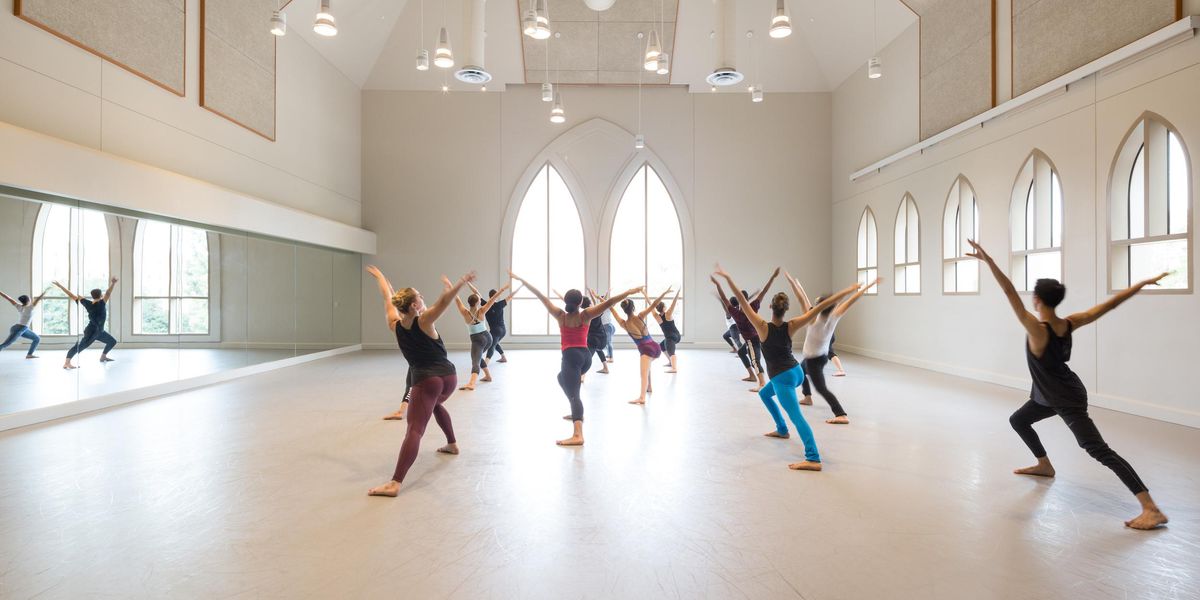Technique My Way: Kathleen Breen Combes
Kathleen Breen Combes moves like silk across the stage. But although it appears effortless, the Boston Ballet principal is constantly at work, maintaining her strength and keeping injuries in check.
Because she is hypermobile, Combes says she has a tendency to pull muscles and overstretch ligaments. Currently, she is working around a labral tear in her left hip socket. While she hasn’t yet resorted to surgery to mend the tear, she’s figured out a mix of massage, physical therapy and warm-up exercises that ease the pain.
Morning Routine
After the alarm goes off at 8:00 a.m., Combes eats breakfast before driving to work with her husband and fellow principal Yury Yanowsky. “I’ll usually have an egg sandwich, or a muffin and granola bar or a banana,” she says. The couple lives 30 minutes from the downtown Boston studios, and Combes likes to arrive at least 30 minutes early to warm up before a 9:45 class.
Combes starts every day by massaging and stretching her calves, which tend to get tight. She works her ankles with winging and sickling Thera-Band exercises to prevent sprains and warm up her toes. “I don’t have very good feet,” she laughs, “so stretching them before class is imperative.”
She also pays special attention to her hips, stretching the front and back of her legs with lunges, deep pliés and extensions. Combes is known to lie on her back mid-class, circling her legs with frog-kick–like motions (bending one leg in, extending it to the side, reaching it forward away from her body and then bending it in again) to keep her joints loose, especially before ronds de jambe en l’air, fondus and grands battements.
Staying Warm
Rehearsals typically run from 11:30 a.m. to 6:00 p.m. with an hour for lunch. To prepare for the afternoon session, Combes’ warm-up changes depending on the role. Classical ballets, for instance, require an intense amount of core stability, Combes says. “I need to make sure I’m really on my leg. I do a lot of balances.”
For neoclassical or contemporary work, Combes repeats a “cross-hemisphere” warm-up that she learned from Forsythe répétiteur Jill Johnson when she set The Second Detail on the company. It’s an oppositional sequence that involves swinging your limbs across the body—for instance, your right arm reaches for your left shoulder, or your left arm reaches for your right hip or toes—while your legs move back and forth. “You work side to side,” says Combes, “and it gets you so warm.”
On the Menu
Combes eats a banana or granola bar after class, and following a three-hour rehearsal from 11:30 to 2:30, she has a break for lunch. She often chooses Caesar salads with chicken, or tomato mozzarella sandwiches. “I like something substantial to get me through three more hours of rehearsal,” she says. “But I try to keep healthy.” For dinner, Combes lets Yanowsky take the lead. “We like to grill,” she says, “and we’re big into steak and potatoes.”
Pre-Performance Rituals
On a two-show day, Combes takes company class at 10:45 a.m. in the theater before the first afternoon run. But when she performs in the evenings only, she prefers to arrive in between the two shows, before the rest of the company returns for class. “I’ll go through a big portion of my role onstage by myself in the empty theater,” she says. “It gets me centered and I can think about anything that has been trouble.”
Rest and Rejuvenation
She doesn’t cross-train much during a performance season, but Combes hits the pool in the off-season, swimming laps, stretching and going through barre in the water with her husband. On days off, Combes enjoys reading, decorating their house and playing with their two dogs. “I mostly like to spend time with my family and enjoy life,” she says. “What we do is so hard. It’s nice to relax at home.”
Pilates Tip
Combes grew up in a Pilates household: Her mother was an instructor, and Combes herself earned a mat certification at 19. Because dancers are very flexible, she finds they often “go to extremes that aren’t necessary in Pilates.” For example, in back extension exercises, “there’s a tendency for dancers to really lift their backs up—but they let their ribs out.” For best results, Combes says, “engage your core, keep your ribs together and use your back muscles properly.”




